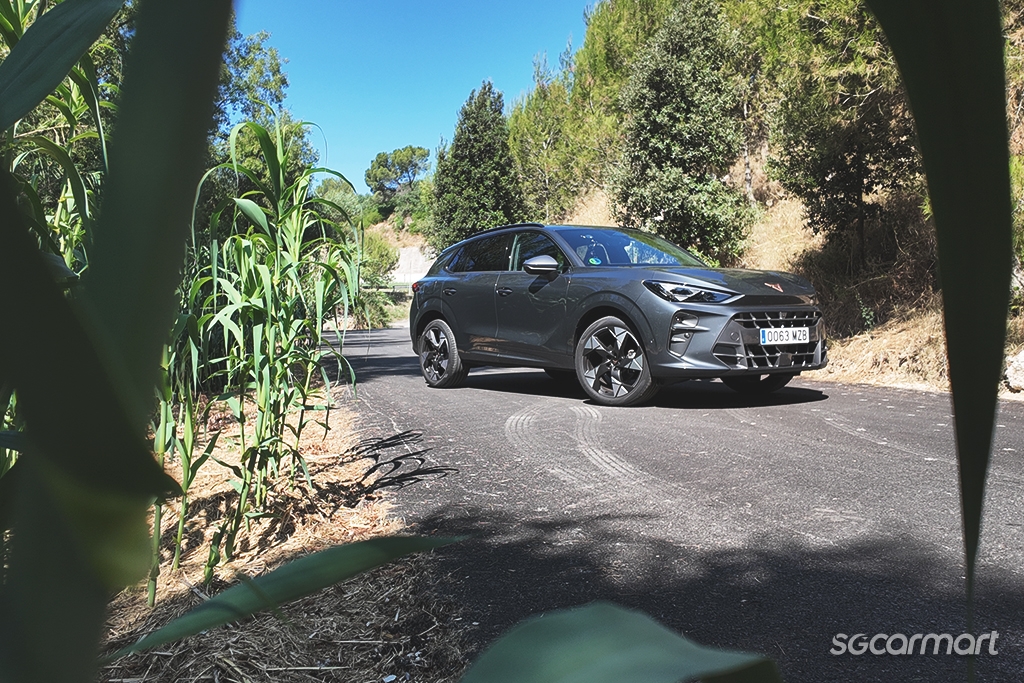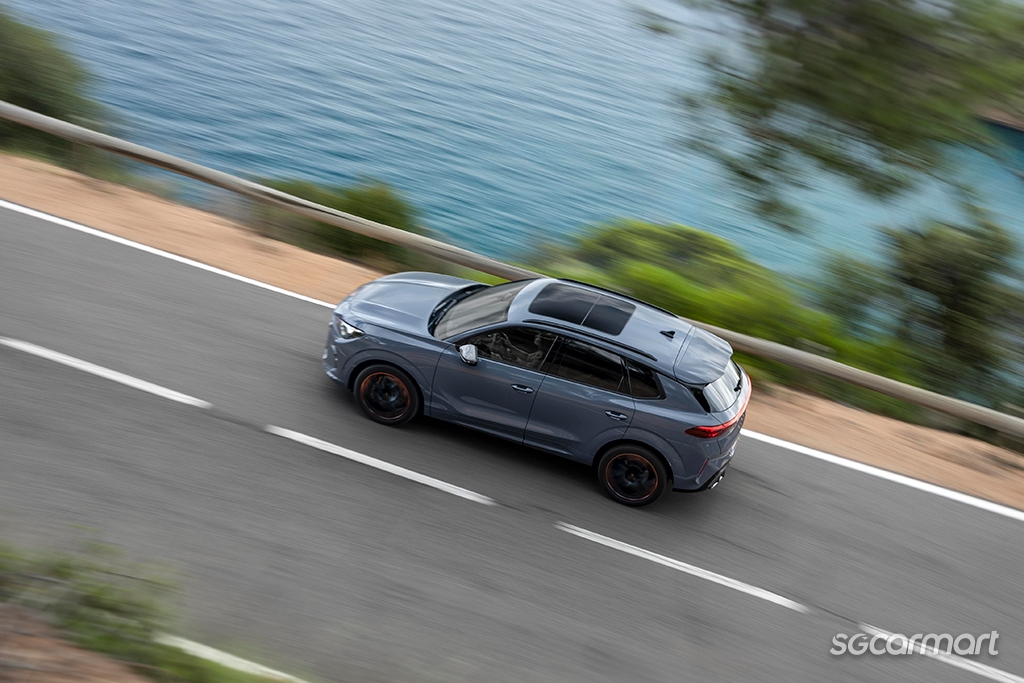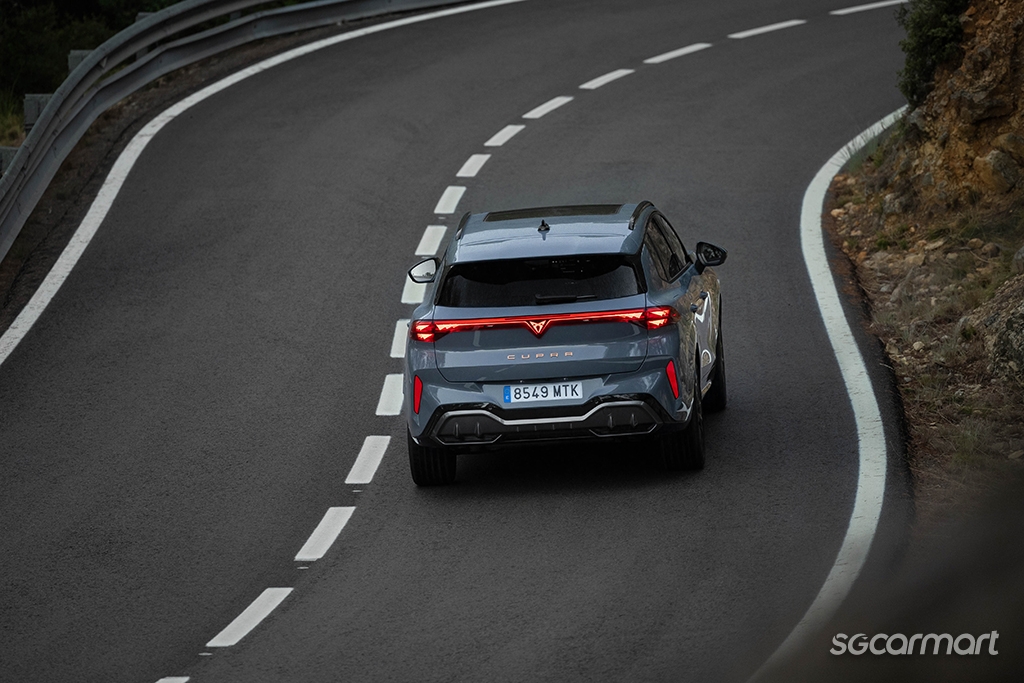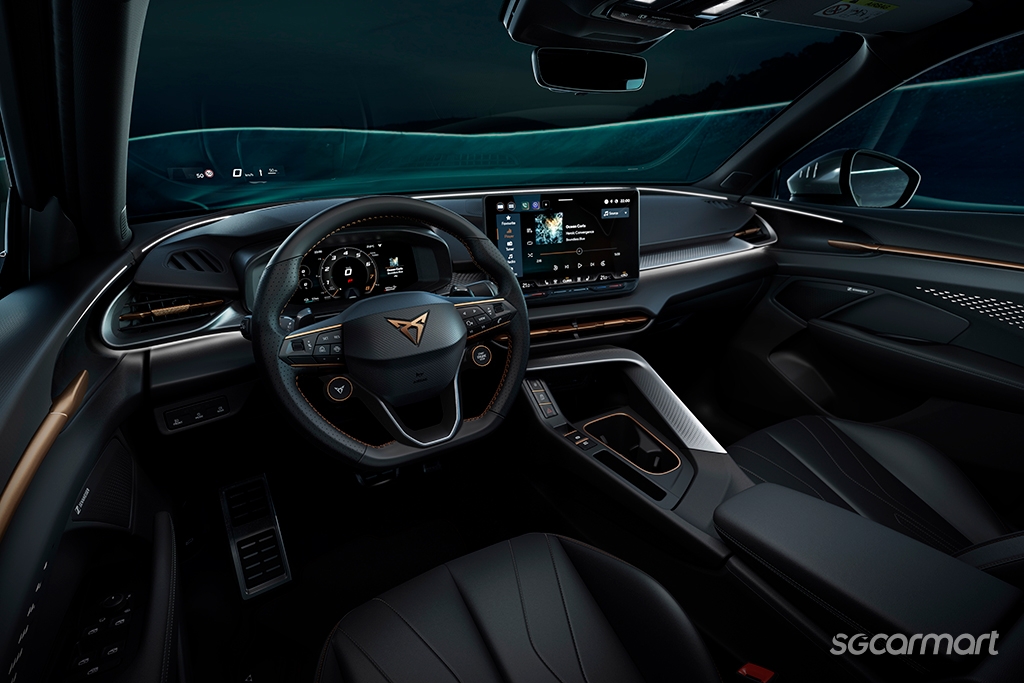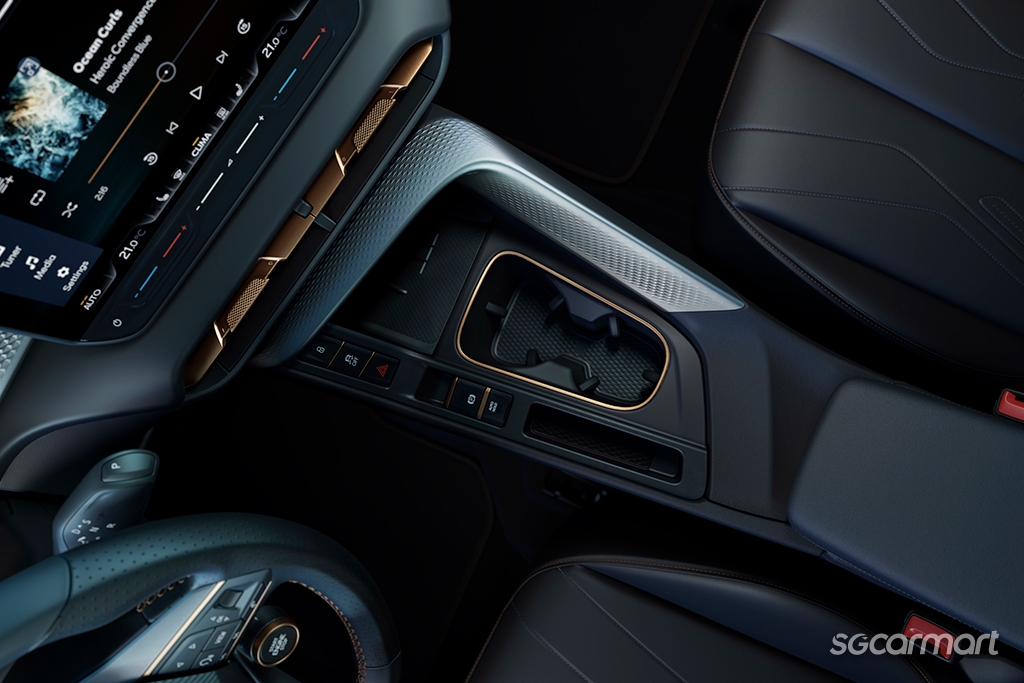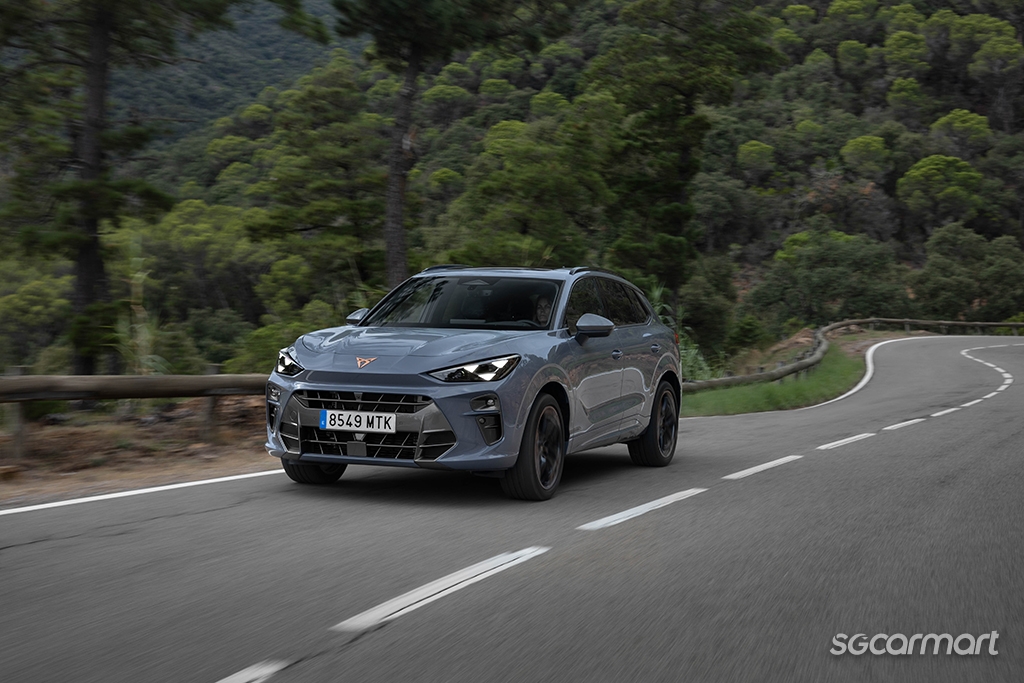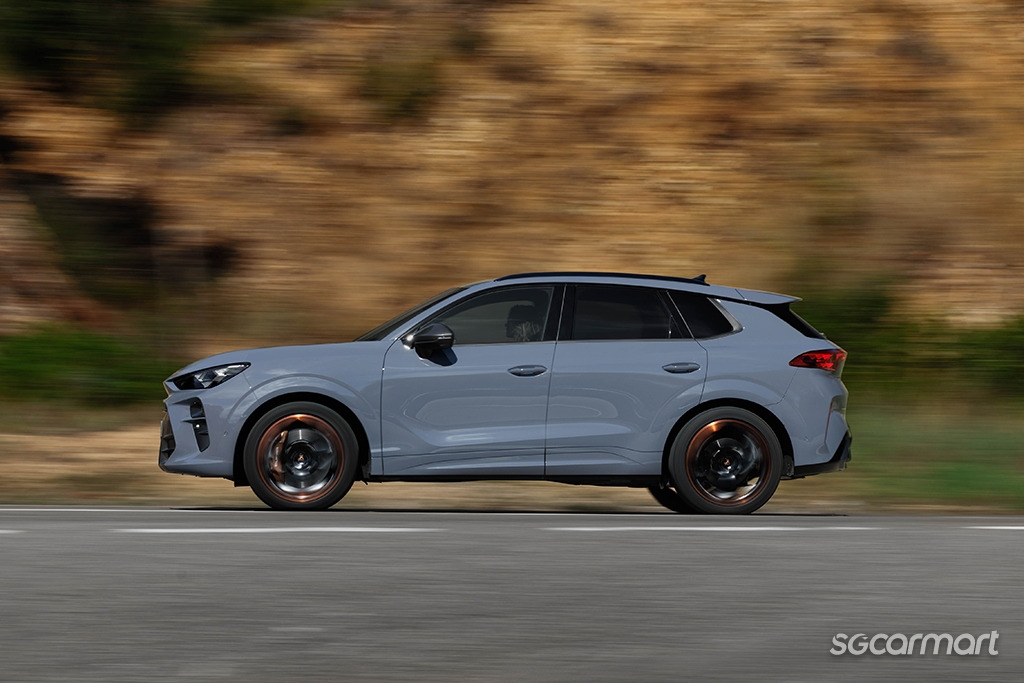Cupra Terramar First Drive Review
15 Jul 2025|8,441 views
What We Like
Distinctive exterior design
Interior trim and finish looks and feels different
Familiar mechanical package
Comfortable ride
What We Dislike
Lacks distinctive personality
Touch slider controls
Launched in March this year, Cupra is one of the newest brands in Singapore. Well, sort of. Cupra had previously been the performance sub-brand of Seat, with hotted-up versions of Seat cars being given the Cupra badging. But, Cupra was carved out as a standalone brand in 2018, with models since then wearing a dedicated Cupra badge.
And in a complicated bit of dealership business, both the Seat and Cupra brands were carried by a previous distributor, Vertex Automobile, who relinquished both brands back in 2023.
But this year, the Cupra brand returned to Singapore, this time under the stewardship of Volkswagen Singapore (Cupra and Seat are both Volkswagen Group brands).
The brand re-launch saw the introduction of two electric models - the Born and the Tavascan - that roadmap the brand's intention to go fully-electric form 2030.
But now, Cupra is set to introduce (re-introduce?) three ICE models to Singapore – the Leon and the Formentor (both having been facelifted), as well as this new model, the Terramar.
With the addition of these three ICE models, Cupra's model lineup in Singapore will number five. But this Terramar looks set to be the most 'traditional' one - a compact SUV powered by petrol.
And if you are thinking, "that sounds just like the Volkswagen Tiguan", you would be right. This Terramar exists exactly in that same compact-SUV segment (the car’s dimensions are very comparable to the Tiguan).
Singapore is getting the 1.5-litre mild-hybrid powertrain (there is also a 1.5-litre PHEV and 2.0-litre model globally), which produces a familiar-looking 148bhp and 250Nm of torque. Yes, that's the non-Cat A set of figures of the VW 1.5-litre eTSI powerplant.
It's clear that the Terramar is designed for comfort. The suspension is certainly on the soft side - great for highway cruising, not so great when try to hustle around a second-gear hairpin.
Performance is, again, adequate for highway cruising but once more feels wanting when charging up windy mountain roads.
All things considered, the behind-the-wheel experience in the Terrarmar is familiar - easy to drive, generally comfortable, everything you will expect from a comfort-biased compact SUV. Despite Cupra's performance-leanings as a brand, this is very much not a performance-focused car.
Design elements like the copper-coloured trimming and textured surfaces are core to the new Cupra design language, and certainly give the cabin a bit more visual character
A key part of this model's intended appeal is the way it looks, and on first glance it certainly has the same bold, aggressive aesthetic that all the new Cupras share - sharp angles, crisp lines, distinctive light signatures. It's still fundamentally a quite-boxy SUV, but with Cupra's new design language I think it looks pretty distinctive.
The cabin also has some of those touches, like the copper trimming and textured surfaces with the triangle motif. But it feels less liberally applied here compared to other models, which is a shame. I wish they had leant even more into this approach and just gone full-send with the interior design. The Dinamica-trimmed bucket seats are nice, though.
Functionally, the Terrarmar operates in a way you'd expect from a modern VW Group product. General operation is quite intuitive, the twin-screen setup allows a good amount of digital customisation, and I still don't like the touch sliders for the volume and air-con temperature.
Set to compete in an already crowded segment, the Terramar looks to win favour with its distinct looks and altogether familiar mechanical package
Cupra's brand direction is about being boldly design-forward. And with its recent run of products, that's certainly obvious to see.
This Terramar is the last new combustion model before the brand goes fully electric, and weirdly it is also probably its most traditional one, almost confusingly going against its ethos of being different. But at the same time, you can understand why. The compact SUV segment is so popular and in-demand that it would be almost malpractice for a brand not to offer something of the ilk.
It looks different, but behind the wheel it feels remarkably familiar: Another mildly-powered, comfort-leaning compact SUV. Yes, beyond the design aspect, it admittedly lacks its own distinctive personality to set it apart amidst a crowded segment.
Is that enough? Pricing will play a big role, obviously. While Cupra Singapore has yet to reveal an indicative pricing (the car is being launched locally on 31 July), the Tiguan’s $205k-$215k pricepoint is going to be the benchmark. Factoring in the fact that the Tiguan is a Cat A model, and this Terramar will be Cat B, and thus accounting for a roughly $18k difference in premiums, a pricepoint of around $230k will be reasonable. Interested buyers should know that Cupra Singapore is now offering pre-launch offers of up to $18k (yes, that neatly covers the "COE difference". I doubt that's a coincidence).
The 2030 deadline for going all-electric is not far off, but it's also not quite here yet. In the meantime, Cupra is hoping that ICE models like this Terramar will help be the bridge towards the future, delivering a familiar mechanical package that wears the brand's distinctive look. Let's see if customers in Singapore bite.
Here are similar petrol-powered compact SUVs to consider:
The Volkswagen Tiguan comes with a wide suite of features alongside an impressive level of polish
The Audi Q3's mild-hybrid engine offers improved fuel economy
What We Like
Distinctive exterior design
Interior trim and finish looks and feels different
Familiar mechanical package
Comfortable ride
What We Dislike
Lacks distinctive personality
Touch slider controls
Launched in March this year, Cupra is one of the newest brands in Singapore. Well, sort of. Cupra had previously been the performance sub-brand of Seat, with hotted-up versions of Seat cars being given the Cupra badging. But, Cupra was carved out as a standalone brand in 2018, with models since then wearing a dedicated Cupra badge.
And in a complicated bit of dealership business, both the Seat and Cupra brands were carried by a previous distributor, Vertex Automobile, who relinquished both brands back in 2023.
But this year, the Cupra brand returned to Singapore, this time under the stewardship of Volkswagen Singapore (Cupra and Seat are both Volkswagen Group brands).
The brand re-launch saw the introduction of two electric models - the Born and the Tavascan - that roadmap the brand's intention to go fully-electric form 2030.
But now, Cupra is set to introduce (re-introduce?) three ICE models to Singapore – the Leon and the Formentor (both having been facelifted), as well as this new model, the Terramar.
With the addition of these three ICE models, Cupra's model lineup in Singapore will number five. But this Terramar looks set to be the most 'traditional' one - a compact SUV powered by petrol.
And if you are thinking, "that sounds just like the Volkswagen Tiguan", you would be right. This Terramar exists exactly in that same compact-SUV segment (the car’s dimensions are very comparable to the Tiguan).
Singapore is getting the 1.5-litre mild-hybrid powertrain (there is also a 1.5-litre PHEV and 2.0-litre model globally), which produces a familiar-looking 148bhp and 250Nm of torque. Yes, that's the non-Cat A set of figures of the VW 1.5-litre eTSI powerplant.
It's clear that the Terramar is designed for comfort. The suspension is certainly on the soft side - great for highway cruising, not so great when try to hustle around a second-gear hairpin.
Performance is, again, adequate for highway cruising but once more feels wanting when charging up windy mountain roads.
All things considered, the behind-the-wheel experience in the Terrarmar is familiar - easy to drive, generally comfortable, everything you will expect from a comfort-biased compact SUV. Despite Cupra's performance-leanings as a brand, this is very much not a performance-focused car.
Design elements like the copper-coloured trimming and textured surfaces are core to the new Cupra design language, and certainly give the cabin a bit more visual character
A key part of this model's intended appeal is the way it looks, and on first glance it certainly has the same bold, aggressive aesthetic that all the new Cupras share - sharp angles, crisp lines, distinctive light signatures. It's still fundamentally a quite-boxy SUV, but with Cupra's new design language I think it looks pretty distinctive.
The cabin also has some of those touches, like the copper trimming and textured surfaces with the triangle motif. But it feels less liberally applied here compared to other models, which is a shame. I wish they had leant even more into this approach and just gone full-send with the interior design. The Dinamica-trimmed bucket seats are nice, though.
Functionally, the Terrarmar operates in a way you'd expect from a modern VW Group product. General operation is quite intuitive, the twin-screen setup allows a good amount of digital customisation, and I still don't like the touch sliders for the volume and air-con temperature.
Set to compete in an already crowded segment, the Terramar looks to win favour with its distinct looks and altogether familiar mechanical package
Cupra's brand direction is about being boldly design-forward. And with its recent run of products, that's certainly obvious to see.
This Terramar is the last new combustion model before the brand goes fully electric, and weirdly it is also probably its most traditional one, almost confusingly going against its ethos of being different. But at the same time, you can understand why. The compact SUV segment is so popular and in-demand that it would be almost malpractice for a brand not to offer something of the ilk.
It looks different, but behind the wheel it feels remarkably familiar: Another mildly-powered, comfort-leaning compact SUV. Yes, beyond the design aspect, it admittedly lacks its own distinctive personality to set it apart amidst a crowded segment.
Is that enough? Pricing will play a big role, obviously. While Cupra Singapore has yet to reveal an indicative pricing (the car is being launched locally on 31 July), the Tiguan’s $205k-$215k pricepoint is going to be the benchmark. Factoring in the fact that the Tiguan is a Cat A model, and this Terramar will be Cat B, and thus accounting for a roughly $18k difference in premiums, a pricepoint of around $230k will be reasonable. Interested buyers should know that Cupra Singapore is now offering pre-launch offers of up to $18k (yes, that neatly covers the "COE difference". I doubt that's a coincidence).
The 2030 deadline for going all-electric is not far off, but it's also not quite here yet. In the meantime, Cupra is hoping that ICE models like this Terramar will help be the bridge towards the future, delivering a familiar mechanical package that wears the brand's distinctive look. Let's see if customers in Singapore bite.
Here are similar petrol-powered compact SUVs to consider:
The Volkswagen Tiguan comes with a wide suite of features alongside an impressive level of polish
The Audi Q3's mild-hybrid engine offers improved fuel economy
Thank You For Your Subscription.
- Sensible Comfort
- Design Touch
- Conclusion















